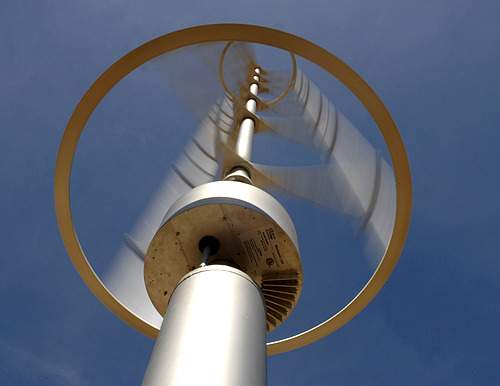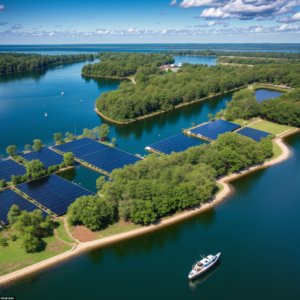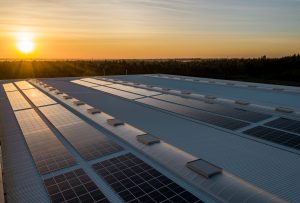Vertical Wind Turbines
It is generally known that there are two main types of wind turbines: Wind turbines with horizontal axis (Horizontal axis wind turbines – Hawt) and wind turbines with vertical axis (Vertical axis wind turbines – VAWT).
This article is about the lesser-known wind turbines with vertical axis. The main advantage of these wind turbines is that the direction of the blowing wind plays no role in them. So these wind turbines require less complex electronics and fewer moving parts and as a result they have lower cost.

This advantage makes them favorable in areas where there is great variation in the flow direction of the wind. In addition, all components of the turbine windmill are at the bottom of the turbine that makes them more accessible for repair.
Another advantage is that the vertical axis windmills can be placed next to each other to a lot less distance than the horizontal axis windmills. This is because the vertical axis windmills did not affect one another if a distance is small while it is not the case with classic windmills with horizontal axis.
The fact that on this kind of does not affect the direction of the wind makes them ideal for urban environments where the wind is significantly variable. They are particularly effective in urban areas on rooftops of buildings where wind speed is double because of diversion of wind by the surrounding buildings to wind turbines.

The main disadvantage is that when they are not mounted on a roof, they are mounted close to the ground where wind speed is very small and therefore gets very less production. Namely only small number of windmills of this type is raised to greater heights in addition to use the wind potential that is available.
Some interesting facts about wind energy:
- Enercon E-126 is wind turbine with largest capacity. It was built in 2007, it can produce 7.58MW, with total height of 198 meters and a diameter of 126 meters.
- Fuhrlander Wind Turbine Laasow’s is tallest wind turbine in the world with a height of 205 meters.
- Europe is a leader in the production of wind power from offshore wind farms. Thanet Offshore Wind Project in the UK with 100 wind turbines have a production capacity of 300 megawatts and is the largest offshore wind farm in the world.
- Shepherds Flat Wind Farm in the U.S. is the largest wind park development with 845 megawatts.
- Gansu Wind Farm in China is the largest proposed project with 20,000 megawatts of electricity capacity.
- In Denmark 20% of total energy needs are covered by windmills.
- One wind turbine can produce enough electricity to power 300-400 homes.
- The total installed capacity of wind farms in the U.S. is more than 40,000 megawatts.
- Offshore wind turbine can be installed in water up to 30 meters depth. Currently scientists are working on technology who can allow installation of windmills on deep up to 60 meters.
- Electricity generation from wind turbines is the fastest growing form of electricity production in the U.S.
- The lifetime of a wind turbine is between 20 and 30 years.
- Offshore wind farms produce more electricity than conventional windmills that are dry. Also the fact is that the offshore wind farms wind is stronger and much constant.
- Wind energy was first used for moving boats on the Nile 5000 years BC.






